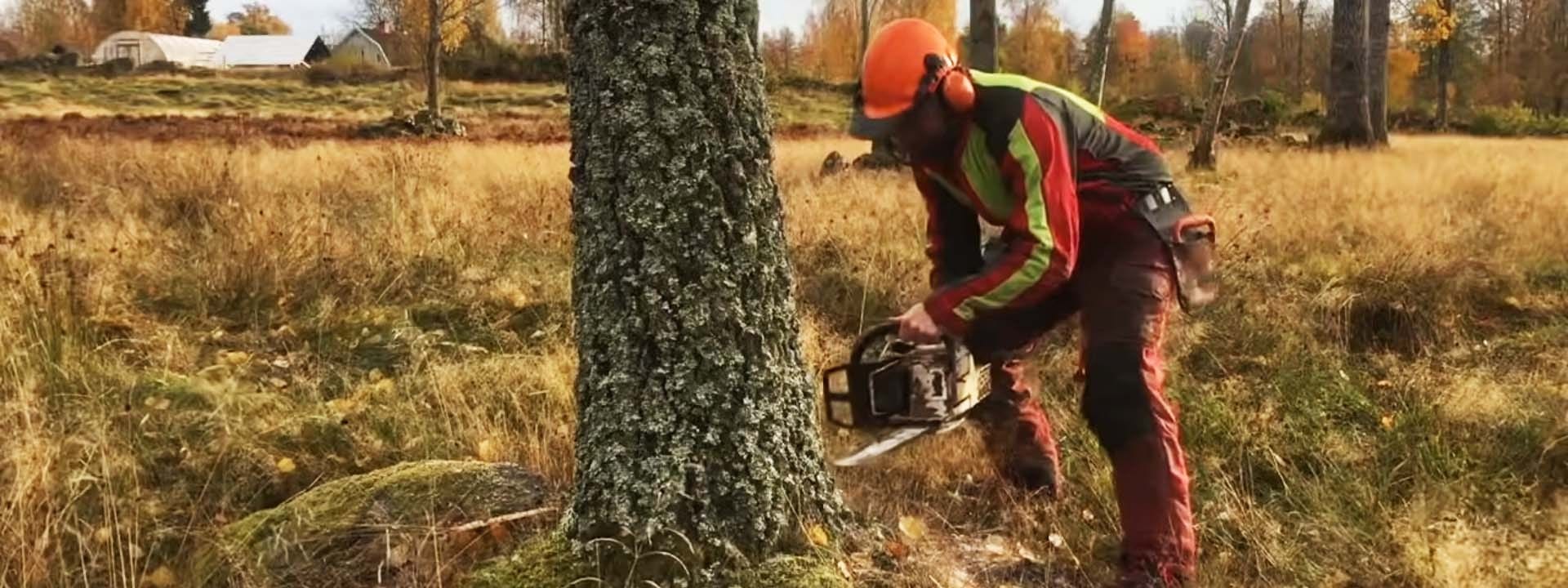Swedish Homestead Series: How to Cut Down a Tree Safely and Precisely
By Wood-Mizer, Europe

Different techniques are used all around the world for felling trees. In Sweden, young loggers value the tradition and experience of older loggers. Simeon is no exception. Having logged for more than ten years, Simeon attributes his logging style, precision, and professionalism to old Swedish loggers who taught him everything he needed to know about felling trees.
“I am a firm believer in proper safety equipment,” Simeon begins. The most crucial aspect of felling trees is the knowledge and equipment necessary for staying safe. Even for skilled loggers, chainsaws can be very dangerous. Although techniques for logging may change, proper head, ear, eye, and body protection is crucial before any logging operation.
Simeon explains that he wears pants and shoes that a chainsaw cannot cut through and a bright jacket that provides visibility in the forest. Contrary to popular belief, Simeon comments that the durable pants and shoes are quite comfortable and light enough to move around. A sturdy helmet and tool belt are also essential for a logger. Simeon’s strap holds a measuring tape, wedges, and an ax.
To cut the tree down, Simeon uses a Stihl MS360 chainsaw. Simeon cuts a notch into the tree that controls where it will fall. The notch faces a stake placed in the ground to illustrate the direction of the fall.
The handle of the chainsaw helps Simeon measure exactly where he’s cutting. “One of the most common mistakes I have seen people make is that when they cut down a tree, they don’t start at the bottom,” Simeon says — starting too high wastes valuable lumber.
After notching, Simeon cuts around the tree. About halfway through, he inserts two wedges to guide the tree as it falls. Pounding them in slightly, Simeon continues to saw around the tree. He then hits the wedges in completely, checking frequently to see where the tree is beginning to fall. Finally, Simeon steps back as the tree accurately falls next to the stake. After the tree is limbed to remove branches and bucked or cut to the appropriate lengths, the log is now ready for the sawmill to be turned into valuable lumber.

